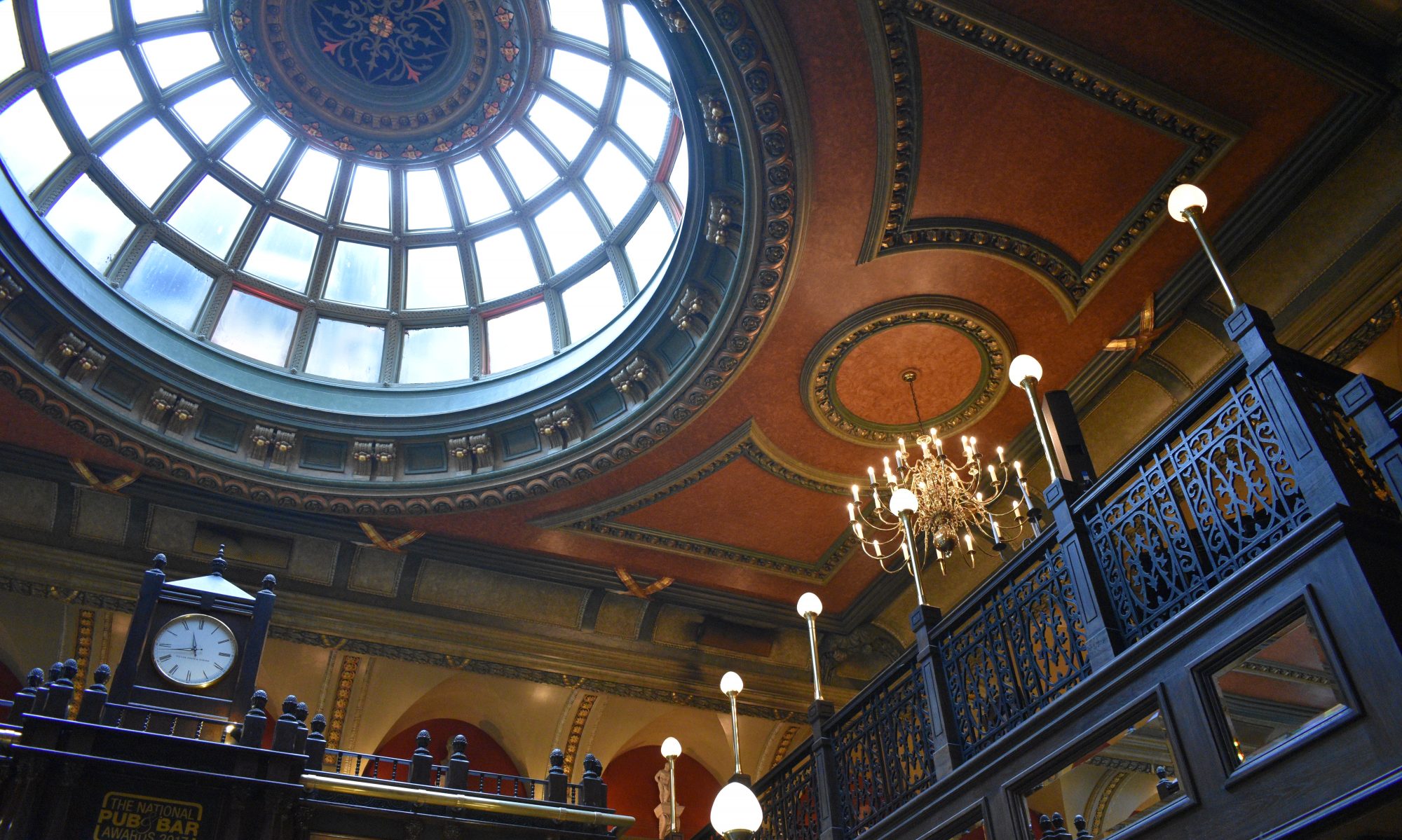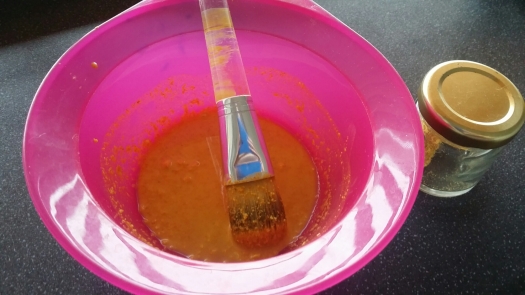As part of All Stars 2016, I wrote a post on Priscilla’s blog it is rewritten here but you can find the original here.
Hello, I’m Emma. I live in England and I write for my blog A random English life. As part of the All Stars 2016, I am here today to write on Priscilla’s blog. I’ve been on the No ‘Poo bandwagon for a little over a year and I have to say I like the result. For those that are unfamilar with the term No ‘Poo is not as disgusting as it sounds! It simply means that I do not wash my hair with commerical shampoo and use alternative methods to wash and condition my hair. As a result of this my hair feels so soft, strong and in better condition then it has been for a long time. That is not to say that I have completely ditched commercial shampoo, within the past year I have bought one small bottle of Shampoo and Conditioner, and I still have at least a quarter of it left. No ‘Poo can be a bit hit and miss and there are times when I just want jump into the shower, wash my hair and know it will be 100 percent clean when I get out of it. It does have it’s disadvantages, my scalp feels more dry and itchier compared to when I use No ‘Poo methods.
It got my thinking about looking at natural alternatives for my skin. My skin is not brilliant, I still regularly have acne. It’s not as bad as it use to be but I get at least one bad breakout every month. I use to rush to the harsh chemical creams, which would make my skin super dry and painful, thinking they were treating my skin. For the past six months I’ve been trailing some different natural alternatives and these are the recipes for the ones I like the most. The great thing about them is that you probably already have all the ingredients for them in your home already and if you don’t they are relatively cheap to buy. Not only are they cheap to buy, they also can be re-purposed for other things, making them very economical. I cringe at how much I use to spend on hair and skincare products, when over the last year I’ve barely bought any!
Cleanser
My cleaner is just one simple ingredient. Oats. That’s it nothing else. I’ve experimented with them in a couple of different forms, but the ingredient itself has remained the same. My favourite way to use them is to just throw a couple of spoonfuls into a Nutri-Bullet – or any apparatus you can use to grind them up. It’ll produce a fine powder. This powder is brilliant as I find it less messier than using oats in larger forms. I like to store mine in a little empty jam jar. When I want to use it, I just mix a little bit of warm water to it. How much water depends on your personal preference. I like to make a paste with it so there’s still a little gritty texture to it. The reason for doing this is so it is a very mild exfoliate. It helps to slug away dead skin cells without any harsh damage. However you can add a little more water to the mix and get more of a watery texture. When you do this you will notice that the water turns to a milky/cloudy colour. Try not to lose the mixture down the sink. It’s very good for the skin. I like to wash the mixture off with either warm or cold water, depending on my mood and a muslin cloth. Leaving this mixture on for 10-15 minutes is a great way to soothe sore dried out skin, such as sun burn. Or skin that is particularly irritated by acne.
Oats are brilliant because they are very gentle. With oats your skin is getting Manganese, Biotin, Vitamin B1 and Magnesium just to name a few. Manganese has been in the beauty industry for a little while and is a key ingredient in a lot of anti-wrinkle creams. Biotin and Vitamin B1 are great at reliving dry skin conditions, itchiness and acne. Magnesium is good for keeping the skin hydrated. So you are getting a lot of lovely properties within your oats that are present in the products you use on your face anyway. The bonus is, you’re paying less of a price tag for it. In addition, Oats will gentle clean your face but they will not strip oil off of it. It will help to maintain a healthy pH of your skin. It’ll remove daily grim without sucking the moisture out of your skin.
Commercial skincare is similar to using a commercial shampoo. A key ingredient in shampoos and some skincare is Sodium Lauryl Sulfate (SLS). It’s that lovely ingredient that gives up suds and helps are skin feel really clean. However, SLS is actually stripping oil out and messing with the balance of scalps and skin. The skin notices that moisture is being taken out of the skin and compensates by producing more. A build up of oil clogs the pores and can produce irritation and acne. In dealing with trying to remove excess oil we use stringent and dispute the skin barrier more. Buying more products to mask the cycle of removing moisture / needing more moisture.

Toner
Now you don’t really need to use a toner with the Oats, but sometimes it is refreshing to use a toner during the day or after exercise. I like to use slightly warmer water when cleaning my face and finish off with a cool burst of a toner.
My favourite one has to be Green Tea. Yet another ingredient you probably already have in your cupboard. I simply pop a tea bag into a measuring jug and fill it full of boiling water. I make way more than my 100ml toner bottle will need. The reason is because I like to double up my teabag and use it as a hair rinse as well. I simply leave the tea bag in until the hot water has cooled. Fill my toner bottle. Then I wash my hair and finish by pouring the tea over my hair.
I use this toner either directly after using oats in the evening, or in the morning in place of using a cleanser. I find it helps to brighten my skin whilst it doesn’t dry it out. There are of course benefits such as polyphenols, which fight free radicals and help reduce inflammation. It’s why everyone raves about it as a drink…I have tried drinking it and I find it disgusting! It also looks disgusting when in a glass jug but carefully concealed in a black spray bottle you can forget about what it looks like.

Moisturiser
I fluctuate between two moisturisers. The first is Jojoba Oil and/or Grapeseed Oil. I like to switch between the two. Both of these oils have a really low comedogenecy rating – that’s just a pompous way of saying it doesn’t clog your pores! Grapeseed Oil is at 0 and Jojoba Oil at 1. This means if you have quite troublesome acne, you might be best going for the Grapeseed Oil. Jojoba Oil is very similar to your skin’s own natural Sebum. The problem is it can be quite pricey. Grapeseed Oil on the other hand is a lot cheaper. Occasionally I will mix one of these oils with Lavender or Tea Tree Essential Oil. I like Lavender at night if I am a bit stressed and Tea Tree Oil in the morning if I have a bit of a breakout. I find that with using the Oats and the Toner though I don’t always need to use a moisturiser so if I am not wearing makeup – I probably won’t bother putting any on.
My second moisturiser is slightly more complicated to make and the recipe is below.
Ingredients:
3 Tbsp Shea Butter
2 Tbsp Grapeseed oil
1 Tbsp Jojoba Oil
1/2 tsp Vitamin E Oil
1 Green Tea bag
5 drops of Essential Oil (I use Lavender).
Method:
- Prepare a bain marie or a double boiler. Gentle melt the Shea Butter on a low heat. When it is close to being fully melted add the Grapeseed and Jojoba oils and give it a good stir.
- Next rip open a tea bag and pour the contents into the oils. Give it a good stir and leave to steep for about 10-20 minutes. I like to save the teabag so I can strain the mixture later.
- After the time, you need to gentle strain the mixture to remove the tea leaves. It’s best to strain into a food mixer. It’s ok if a few bits of tea end up in the mixture. Once it’s cool a little bit add the Vitamin E Oil and the Essential Oil of your choice. Leaving the mixture to cool a little bit will save spoiling the smell of the essential oil.
- Next you need to gentle beat the mixture in the food processor to add air into it. This will create a lovely like texture to the mixture. Once the mixture is cooled it’ll be ready to transfer into a tub. A empty jam jar or a old sterilised moisturiser container are great choices.
- I like to store mine in the fridge overnight to help it to set.
- It’ll last for as long as the ingredients will last there is no set spoiling period with this moisturiser.
This cream is rich and lovely, but all the ingredients in it have a very low comedogenecy rating. So it’s moisturising and great for all skin types, but it’s not going to clog your pores if you suffer from acne. I like to use a little rubber pad and massage this into my face only at night (or if I am not leaving the house and can just leave it on like a moisture mask). I find it relaxing and like a little mini facial and in the morning my skin feels amazing.
There is just a slight word of warning. When you transition from a period of commercial skincare to homemade, your skin may go through a transition phase. SLS will be stripping your skin and your skin will be reacting by producing more oil. There may be an adjustment period when you are no longing stripping your skin, but your skin is still producing more oil. You may end up a bit shiner and have more spots then usual but you face will learn to adjust. If you do feel self conscious by all means use a gentle store bought cleanser…but try to limit the use to allow transition. Blotting sheets (or coffee filter pads are a great cheap alternative!) will help absorb some excess oil during your transition phase.
There you have it. The most expensive ingredient there is the Jojoba Oil, which you can substitute out anyway. You are getting more products for your money and they can do some really lovely things to your skin. My skin feels like I’ve just had an expensive facial after using these. I also have these ingredients on hand for cuticle oils and creams. I even cook with Grapeseed Oil as well.






